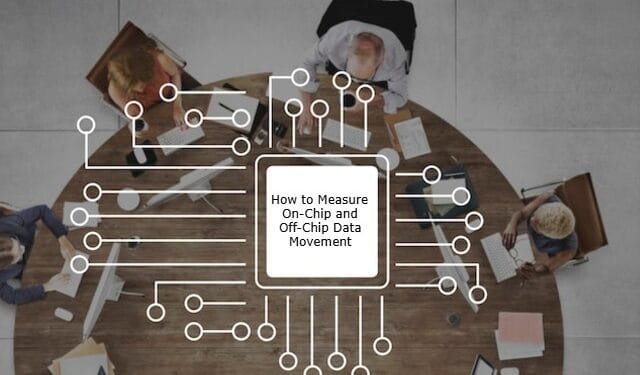Accurately measuring on-chip and off-chip data movement is crucial for optimizing system performance, energy efficiency, and overall design in modern computing architectures. Understanding how data traverses within and between chips enables engineers to identify bottlenecks, enhance processing speeds, and reduce power consumption. This article delves into methodologies and tools for effectively measuring on-chip and off-chip data movement.
Understanding On-Chip and Off-Chip Data Movement
On-Chip Data Movement refers to the transfer of data within a single integrated circuit (IC), encompassing components like processors, caches, and interconnects. Efficient on-chip data movement is vital for high-speed processing and low power consumption.
Off-Chip Data Movement, on the other hand, involves data transfer between the IC and external components such as memory modules, storage devices, or other chips. This movement is typically slower and more energy-intensive due to longer physical distances and external interfacing requirements.
Importance of Measuring Data Movement
Quantifying data movement provides insights into system performance and energy efficiency. By measuring how data flows on-chip and off-chip, engineers can:
- Identify Bottlenecks: Detect areas where data transfer delays occur, hindering performance.
- Optimize Resource Allocation: Allocate processing power and memory more effectively based on data flow patterns.
- Enhance Energy Efficiency: Reduce unnecessary data transfers to lower power consumption.
- Improve System Design: Refine architectural designs to facilitate smoother data movement.
Techniques for Measuring On-Chip Data Movement
- Performance Counters: Modern processors are equipped with hardware performance counters that track various events, including data transfers between caches and execution units. Tools like Intel’s VTune Profiler utilize these counters to provide detailed insights into on-chip data movement.
- Simulation Tools: Architectural simulators, such as Gem5, allow for detailed modeling of on-chip data flows. By simulating different workloads, engineers can observe data movement patterns and assess the impact of architectural changes.
- Network-on-Chip (NoC) Analysis: For systems utilizing NoC architectures, analyzing the interconnect traffic is essential. Methodologies have been developed to assess the performance of these interconnections, focusing on metrics like latency and throughput.
Techniques for Measuring Off-Chip Data Movement
- Memory Profiling Tools: Tools such as Intel’s Memory Latency Checker (MLC) measure memory latencies and bandwidth, providing insights into data movement between the processor and external memory.
- Hardware Performance Counters: Similar to on-chip measurements, performance counters can track events related to off-chip data transfers, such as memory reads/writes and I/O operations.
- Bandwidth Utilization Analysis: Assessing the utilization of data buses connecting the chip to external components helps in understanding off-chip data movement. This involves measuring the data transfer rates and identifying periods of congestion or underutilization.
Challenges in Measuring Data Movement
Accurately measuring data movement presents several challenges:
- Granularity: Achieving fine-grained measurements without introducing significant overhead can be difficult.
- Instrumentation Overhead: The tools and methods used for measurement can themselves impact system performance, potentially skewing results.
- Complexity of Modern Architectures: The increasing complexity of chip architectures, with multiple cores and heterogeneous components, complicates the measurement process.
Best Practices for Accurate Measurement
To measure on-chip and off-chip data movement accurately:
- Use a Combination of Tools: Employ both hardware and software tools to cross-verify data and obtain a comprehensive view.
- Calibrate Measurement Tools: Ensure that tools are properly calibrated to minimize errors and account for any inherent biases.
- Minimize Intrusiveness: Choose measurement techniques that impose minimal overhead to avoid perturbing the system’s natural behavior.
- Analyze Under Realistic Workloads: Conduct measurements under typical operating conditions to obtain relevant data.
- Stay Updated with Latest Methodologies: The field is continually evolving, with new techniques and tools emerging. Keeping abreast of the latest developments ensures the use of the most accurate and efficient measurement methods.
Conclusion
Understanding how to measure on-chip and off-chip data movement is essential for optimizing modern computing systems. By employing appropriate measurement techniques and tools, engineers can gain valuable insights into data flow dynamics, leading to enhanced performance, energy efficiency, and overall system design. As technology advances, staying informed about the latest methodologies will be crucial for maintaining accuracy in data movement measurement.
For a deeper understanding of evaluating data movement bottlenecks, consider watching the following lecture:








